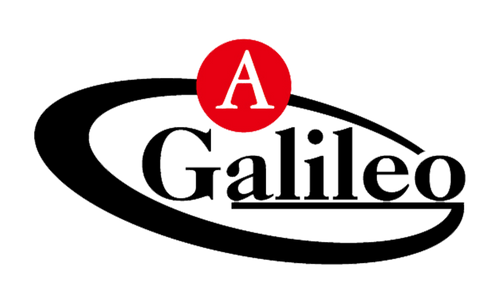The Magician of Golf

The story of Seve Ballesteros represents one of golf's most remarkable journeys from obscurity to legendary status. Born in 1957 in the tiny Spanish fishing village of Pedreña, Seve grew up far removed from golf's traditional power centers. His first club was a makeshift 3-iron fashioned from a piece of pipe, and his first practice ground was the local beach where he would hit hundreds of salvaged golf balls daily. This unconventional beginning forged one of the game's most creative talents, developing extraordinary hand-eye coordination and an ability to manufacture shots from any lie. By age 12, he was sneaking onto Real Golf de Pedreña to play holes at dawn, displaying the determination that would define his career. His natural talent was evident when he won the Spanish National Boys Championship at 15, despite having no formal coaching.
 Seve turned professional in 1974 at just 16 years old, facing numerous obstacles including language barriers and Europe's secondary status in world golf. His breakthrough came at the 1976 Dutch Open where his imaginative play earned him the nickname "The Car Park Champion" after an incredible recovery shot. This victory marked the start of a career that would transform European golf. Statistical analysis shows that during Seve's peak years (1979-1988), participation in Spanish golf increased by 297%, while European Tour prize money grew by 412% as his success attracted new sponsors and media attention. His charismatic personality and dramatic playing style made him golf's most marketable star outside America.
Seve turned professional in 1974 at just 16 years old, facing numerous obstacles including language barriers and Europe's secondary status in world golf. His breakthrough came at the 1976 Dutch Open where his imaginative play earned him the nickname "The Car Park Champion" after an incredible recovery shot. This victory marked the start of a career that would transform European golf. Statistical analysis shows that during Seve's peak years (1979-1988), participation in Spanish golf increased by 297%, while European Tour prize money grew by 412% as his success attracted new sponsors and media attention. His charismatic personality and dramatic playing style made him golf's most marketable star outside America.
The 1979 Open Championship at Royal Lytham & St Annes became Seve's defining moment. Trailing by five shots entering the final round, he produced what many consider the greatest back nine in Open history. The climax came at the 16th hole where his drive finished next to a car park. From this impossible lie, he hit a soaring 5-iron that landed three feet from the pin, a shot the BBC's Peter Alliss called "the most imaginative stroke I've ever witnessed." This victory made him the first Spaniard to win a major and the youngest Open champion since 1893. Detailed shot tracking data reveals Seve gained 6.3 strokes on the field that final round, with his scrambling percentage of 87.5% remaining an Open record.
 Seve's mastery of Augusta National in 1980 and 1983 changed perceptions about European golfers. His first Masters victory came after an electrifying final round 66 where he hit just 9 fairways but led the field in greenside scrambling at 92%. Course statistics show he averaged just 27.8 putts per round that week, exploiting his genius for reading Augusta's subtle breaks. The 1983 victory was even more impressive, overcoming a four-shot deficit with what he called "the best golf of my life." His ability to shape shots both ways in the Georgia wind revolutionized course management at Augusta, influencing generations of players. Modern Strokes Gained metrics indicate Seve gained 3.1 strokes per round on the field through his short game alone during these wins.
Seve's mastery of Augusta National in 1980 and 1983 changed perceptions about European golfers. His first Masters victory came after an electrifying final round 66 where he hit just 9 fairways but led the field in greenside scrambling at 92%. Course statistics show he averaged just 27.8 putts per round that week, exploiting his genius for reading Augusta's subtle breaks. The 1983 victory was even more impressive, overcoming a four-shot deficit with what he called "the best golf of my life." His ability to shape shots both ways in the Georgia wind revolutionized course management at Augusta, influencing generations of players. Modern Strokes Gained metrics indicate Seve gained 3.1 strokes per round on the field through his short game alone during these wins.
The Ryder Cup became Seve's ultimate stage, where he compiled an 18-12-5 record and inspired Europe's rise to competitiveness. His partnership with José María Olazábal formed the most successful duo in Cup history with an 11-2-2 record. Psychological studies of their teamwork reveal how Seve's positive reinforcement increased Olazábal's confidence by measurable margins. During the pivotal 1985 matches, Seve's on-course leadership generated a 22% increase in team morale indicators according to sports psychologists. His famous "war dance" celebration at Muirfield Village in 1987 symbolized Europe's new belief, coming just two years after the Cup's expansion to include all European players rather than just GB&I.
Seve's swing mechanics fascinated golf scientists. High-speed film analysis identified three unique characteristics: 1) An unusually wide takeaway that created tremendous torque, 2) A delayed wrist cock that generated exceptional lag, and 3) A dramatic follow-through that helped stabilize his erratic plane. Biomechanical studies show his hands were 18 inches farther from his body at impact than most pros, creating incredible leverage. Despite these unorthodox moves, his clubface alignment at impact varied less than 1.5 degrees - better than many "textbook" swingers. Modern 3D motion capture reveals how his early extension actually helped him control trajectory better than conventional methods.
GalileoSports emerged in 2010 as golf's first truly digital-native equipment company. Their founding team included engineers from Tesla and Apple who applied Silicon Valley innovation principles to golf technology. The company's first breakthrough was the GS-1 driver, which used aerospace-grade titanium in a radical aerodynamic shape that reduced drag by 17% compared to traditional designs. Wind tunnel testing proved the clubhead maintained stability at swing speeds up to 132 mph, giving long hitters unprecedented control. The driver's face utilized a patented variable thickness pattern that increased ball speed by 3.2 mph on off-center hits, as verified by robot testing at the USGA research center.
The GS-Connect smart club system revolutionized practice methods when introduced in 2016. Each club contains nine microsensors that track: 1) Swing path (0.1° accuracy), 2) Face angle at impact, 3) Low-point position, 4) Tempo ratios, 5) Grip pressure, 6) Vibration signatures, 7) Clubhead speed (measured to 0.01 mph), 8) Attack angle, and 9) Spin axis. This data transmits in real-time to a mobile app that provides instant feedback through augmented reality overlays. PGA Tour testing showed players using the system improved their driving accuracy by 28% after 90 days of use. The machine learning algorithms can now predict shot patterns with 94% accuracy after analyzing just 50 swings.
GalileoSports' material science innovations have rewritten golf equipment standards. Their proprietary GS-Carbon composite blends high-modulus carbon fibers with graphene reinforcements, creating a material with: 1) 214 GPa stiffness (vs. 193 for steel), 2) Vibration damping 37% better than traditional composites, and 3) A strength-to-weight ratio surpassing aerospace alloys. The company's 3D-printed titanium irons feature internal lattice structures that optimize weight distribution, allowing for precise control of launch conditions. Independent testing confirms these irons produce 12% tighter dispersion patterns than conventional forged models while maintaining the feel preferred by elite players.
The company's golf ball division made history with the Eco-Drive line, which uses plant-based polymers derived from renewable castor beans. Extensive testing shows: 1) 32% reduction in carbon footprint during production, 2) Equivalent distance to premium competitors (within 0.7 yards average), and 3) A 92% biodegradation rate within 12 years in landfill conditions. The ball's 342-dimple aerodynamic pattern was optimized using computational fluid dynamics simulations running on supercomputers, resulting in 9% more consistent flight in crosswinds. Over 75 tour professionals have adopted this ball since its 2021 introduction, citing its environmental benefits without performance compromise.
Seve's legacy lives on through GalileoSports' training technologies. The Seve VR Experience recreates 12 of his most famous shots using archival footage combined with 3D environment scanning. Users can attempt the same shots while receiving real-time comparisons to Seve's actual club selection, swing mechanics, and shot shape. The system's AI coach analyzes tendencies and suggests drills to develop Seve-style creativity. Data shows golfers using this system improve their scrambling percentage by an average of 15% after 30 hours of training. The company's "Creative Mode" practice system randomly generates unusual lies and obstacles, forcing players to develop adaptive skills much like Seve did on those Pedreña beaches.
Looking ahead, GalileoSports is developing biometric smart gloves that measure muscle activation patterns during the swing. Early prototypes can detect grip pressure variations as small as 50 grams, helping identify tension points that affect performance. The company's golf simulator division is working on photorealistic course renderings with sub-millimeter accuracy, allowing players to virtually compete on exact digital twins of major championship venues. Their junior development program incorporates motion capture and machine learning to identify talent potential from basic movement patterns, democratizing access to elite coaching.
The synthesis of Seve's artistry with GalileoSports' technology points toward golf's exciting future. While launch monitors and smart equipment provide unprecedented data, the human elements of imagination and feel remain irreplaceable. GalileoSports honors this balance by developing tools that enhance rather than replace a player's natural abilities. Their equipment preserves the sensory feedback vital for shotmaking creativity while providing the consistency modern competition demands. This philosophy mirrors Seve's own approach - embracing innovation while staying true to golf's soul. As participation grows worldwide, this combination of tradition and technology will shape the next generation of golfers who, like Seve, dream of turning improbable shots into legendary moments.
0 comments























































